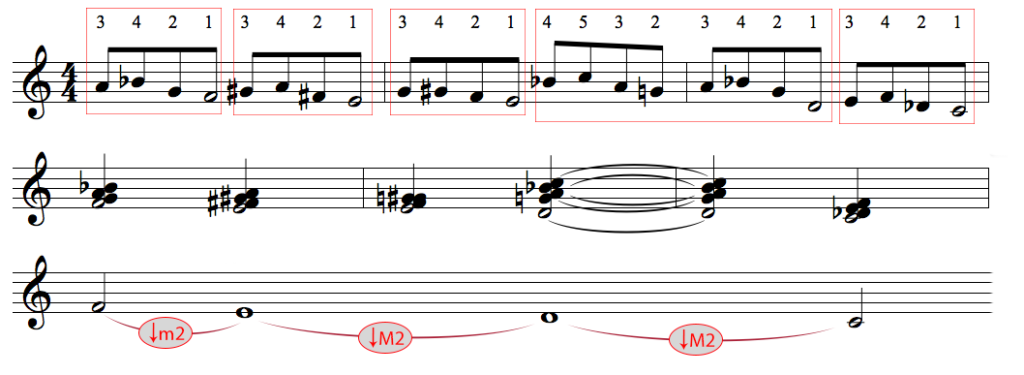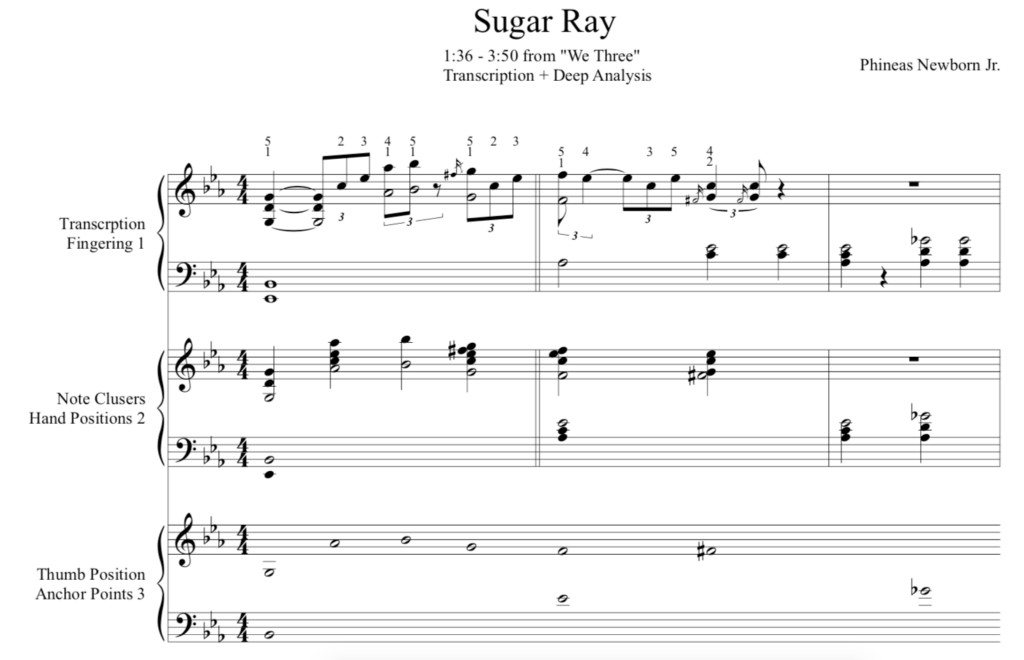Piano Transcription & Deep Analysis – Sugar Ray by Phineas Newborn Jr.
Transcription PDF available on (Patreon).
I thought I’d take a break from the grind of writing about hand independence and transcribe something instead.
In my own practice, I revisited this tune by Phineas Newborn Jr. called Sugar Ray. I encourage students to learn it because the melody has a very specific piano/band arrangement, it covers a good spatial range at the piano, and it’s a ton of fun to play. I’ve been using it as a means to practice playing bass lines and counterpoint in certain keys.

I had never transcribed his improvised solo, so I thought it would be a good opportunity to “look under hood” per se, and analyze it based on the ideas I’ve been having about unifying physical gestures with harmonic/melodic/rhythmic theories.
Analyzing and notating improvised music harmonically and melodically has been done ten times over; I’m not interested in doing that exclusively. So how do you communicate physical gestures? I’ve been using a combination of Western musical notation with photoshopped images of the piano keyboard.


I think this is a good form, especially for visualizing spatial relationships. It’s not great for directional relationships though, mainly because of how time consuming it would be to produce images for every hand position.
In the previous article, I mentioned that a complete physical analysis would have to include at least three levels of magnification:
- Note to note (minute spatial & directional relationships)
- Movement within note clusters (broader spatial & directional relationships + finger sequences)
- Movement between clusters (very broad spatial & directional relationships + anchor points)
Here’s one way these could be visualized:

My analysis of Sugar Ray is mainly an exploration of this form. There are three piano staves, each representing a certain level of magnification. The first staff is the transcription + fingering. The second staff organizes the fingerings into note clusters and hand positions. The third is the broadest level of magnification, representing the movement of anchor points (thumb).

We’ll never know how Newborn actually played this. But to produce this kind of “deep” analysis, I had to make assumptions, mainly about fingering and economy of motion. There’s no question that there’s a hierarchy of fingerings and hand positions that give varying degrees of economy, efficiency and range of motion. But there are still multiple possibilities. I’ve done my best to uncover how Newborn may have played this, but ultimately, this is my interpretation.
It’s definitely an imperfect system. But improvised solos themselves are imperfect. Transcribing, notating, and analyzing often involves “squaring circles” so to speak. Often, you can tell what the soloist intended to play, but for whatever reason, made a mistake. Do you write down the mistake, or the intention? Also, western music notation is very expressive, but not meant to communicate physical gestures at the piano. So, I had to use some unconventional symbols to represent certain movements.
Overall, this was an interesting exercise. I think I need to complete a few more transcriptions to start understanding how to best use Western music notation for this kind of analysis. I may also try something simpler. I thought Sugar Ray would be a good solo to start with because of its technical variety, but I’m rethinking that.
Maybe Lennie Tristano on Line Up?
